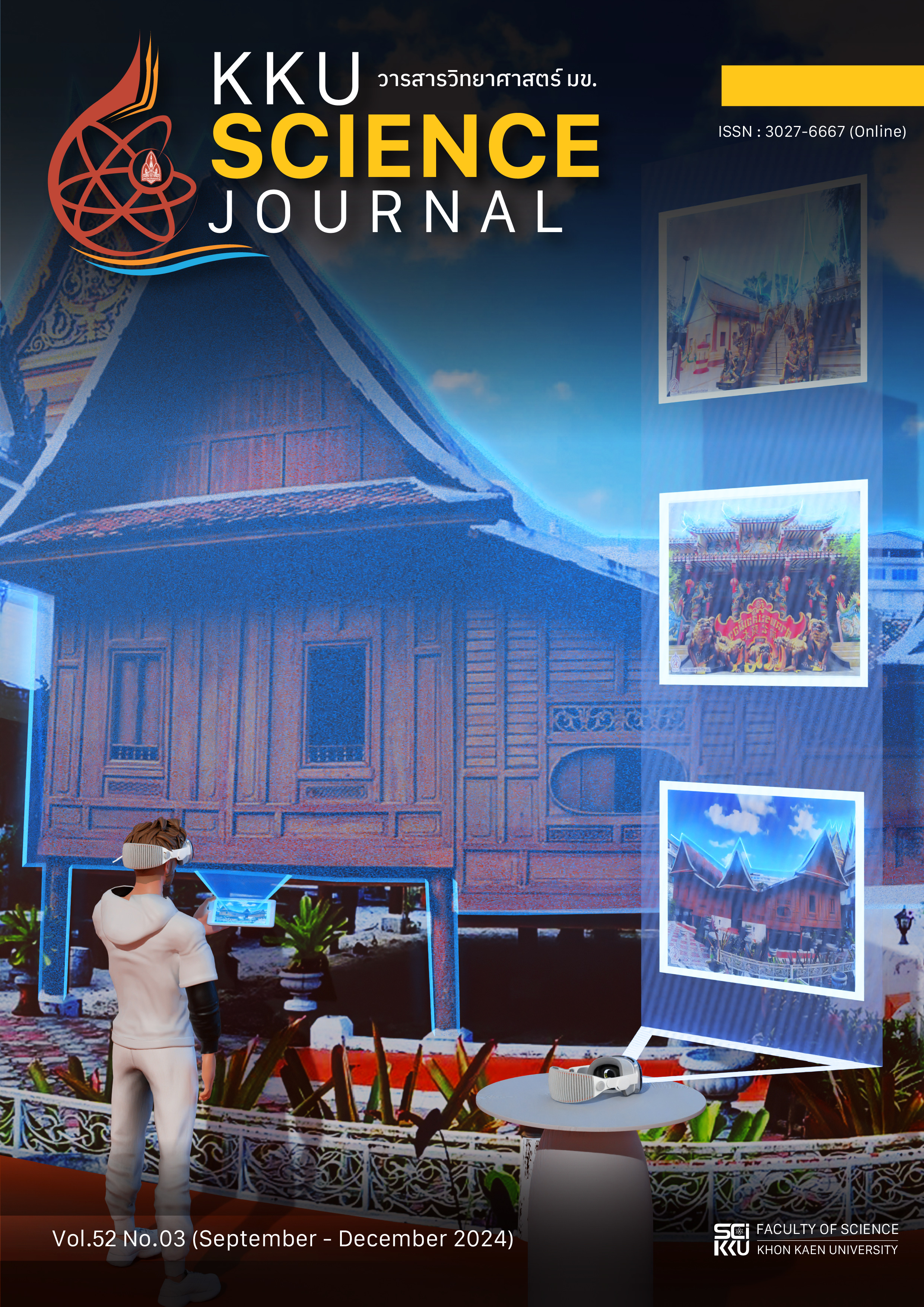Comparative Analysis of Time Series Forecasting Models for Predicting Tourist Arrivals in Chiang Mai
Main Article Content
Abstract
The purpose of this study is to evaluate how well five time series forecasting models—ARIMA, LSTM, Prophet, XGBoost, and Random Forest—predict Chiang Mai's arrivals of tourists. The study utilized a dataset that comprised visitor counts from January 2020 to December 2023. We split the data into two sets: a training set from January 2020 to December 2022, and a test set from January 2023 to December 2023. We used the mean absolute error (MAE), root mean square error (RMSE) and mean absolute percentage (MAPE) to evaluate the models' effectiveness. The results indicate that the ARIMA model demonstrated the highest accuracy. The Comparative analysis indicate that the ARIMA model exhibits the lowest forecasting error metrics among the models evaluated (MAE = 8,325.33, RMSE = 11,462.63, and MAPE = 10.16).
Article Details

This work is licensed under a Creative Commons Attribution-NonCommercial-NoDerivatives 4.0 International License.
References
กระทรวงการท่องเที่ยวและกีฬา. (2567). ข้อมูลสถิตินักท่องเที่ยว (Tourism Statistic). แหล่งข้อมูล: www.mots.go.th/more_news_new.php?cid=411. ค้นเมื่อวันที่ 4 เมษายน 2567.
นิติกร จันหาญ และจารี ทองคํา. (2565). การเปรียบเทียบประสิทธิภาพของเทคนิคอริมาและเทคนิคถดถอยการเรียนรู้ของเครื่องในการพยากรณ์ราคาบิตคอยน์. วารสารวิทยาศาสตร์และเทคโนโลยี มหาวิทยาลัยอุบลราชธานี. 24 (1): 62 - 75.
บุญศี โศภณัฐยานนท์. (2557). ความสัมพันธ์ระหว่างอัตราผลตอบแทนของตลาดหลักทรัพย์ อัตราดอกเบี้ย และอัตราแลกเปลี่ยนเงินตราต่างประเทศ ของกลุ่มประเทศอาเซียน AEC. สารนิพนธ์ปริญญาบัณฑิต, มหาวิทยาลัยมหิดล. กรุงเทพฯ. 59 หน้า.
วรางคณา เรียนสุทธิ์. (2565). การพยากรณ์มูลค่าการส่งออกพริกไทย. วารสารวิจัยและส่งเสริมวิชาการเกษตร สำนักวิจัยและส่งเสริมวิชาการเกษตร มหาวิทยาลัยแม่โจ้. 39(3): 156 - 168.
Breiman, L. (2001). Random Forest. Machine Learning 45: 5 - 32. doi: 10.1023/A:1010933404324.
Botchkarev, A. (2019). Performance metrics (error measures) in machine learning regression, forecasting and prognostics: Properties and typology. Interdisciplinary Journal of Information, Knowledge, and Management 14: 45 - 79.
Chen, T. and Guestrin, C. (2016). XGBoost: A Scalable Tree Boosting System. In: Proceedings of the 22nd ACM SIGKDD International Conference on Knowledge Discovery and Data Mining, San Francisco. 785 - 794.
Fan, D., Sun, H., Yao, J., Zhang, K., Yan, X. and Sun, Z. (2021). Well production forecasting based on ARIMA-LSTM model considering manual operations. Energy 220: 119708. doi 10.1016/j.energy.2020.119708.
Greff, K., Srivastava, R.K., Koutník, J., Steunebrink, B.R. and Schmidhuber, J. (2017). LSTM: A Search Space Odyssey. IEEE Transactions on Neural Networks and Learning Systems 28(10): 1 - 12. doi 10.1109/ TNNLS.2016.2582924.
Nochai, R. and Nochai, T. (2006). ARIMA model for forecasting oil palm price. In: Proceedings of the 2nd IMT-GT Regional Conference on Mathematics, Statistics and applications, Penang. 13 - 15.
Pecho, R.D.C., Vijaya, K., Sharma, N., Pal, H. and Jose, B.K. (2024). An approach for crop yield prediction using hybrid XGBoost, SVM and C4. 5 classifier algorithms. Engineering & Applied Science Research 51(3): 300 - 312.
Taylor, S.J. and Letham, B. (2018). Forecasting at scale. The American Statistician 72(1): 37 - 45. doi: 10.7287/peerj.preprints.3190v2.
Vandeput, N. (2019). Forecast KPI: RMSE, MAE, MAPE & Bias. Towards Data Science. Source: https://towards datascience.com/forecast-kpi-rmse-mae-mape-bias-cdc5703d242d. Retrieved from March 2024.
Verma, P., Reddy, S.V., Ragha, L. and Datta, D. (2021). Comparison of time-series forecasting models. In: 2021 International Conference on Intelligent Technologies (CONIT). Hubli, India. 82 - 88. doi 10.1109/ CONIT51480.2021.9498451.


